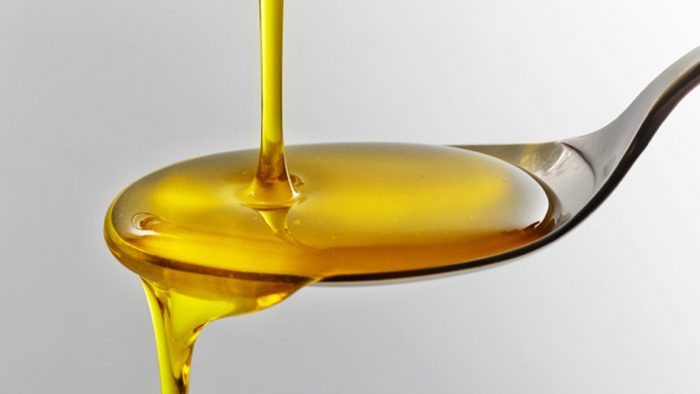The cold and flu season is starting to rear its ugly head, and we cannot seem to get away from the coughing and sneezing. But why are we more prone to these infections during the colder months?
Viral infections that cause the common cold or flu can range from a nuisance to a serious health threat.
According to the Centers for Disease Control and Prevention (CDC), “common colds are the main reason that children miss school and adults miss work.”
Although most cases of the common cold and flu tend to go away by themselves, every year, flu kills an estimated 290,000 to 650,000 people worldwide.
What do scientists know about how plummeting temperatures allow these viruses to spread, and what is the best way of preventing colds and flu? We investigate.
Common cold vs. flu
First, we need to distinguish between the common cold and flu, because the viruses that cause these do not necessarily behave in the same way.
Most of the time, the common cold manifests with a trilogy of symptoms: a sore throat, a blocked nose, and coughing and sneezing. There are more than 200 viruses that can cause the common cold, but coronaviruses and rhinoviruses are by far the most common culprits.
There are four human coronaviruses that account for between 10% and 30% of colds in adults. These are in the same family of viruses as SARS-CoV-2, which causes COVID-19. However, it mostly causes only mild illness.
Interestingly, around a quarter of people who have an infection with a common cold virus do not experience any symptoms at all.
The flu develops due to the influenza virus, of which there are three different types: influenza A, influenza B, and influenza C.
Common colds and flu share many symptoms, but an infection with influenza also tends to manifest with a high temperature, body aches, and cold sweats or shivers. This may be a good way to tell the two apart.
As with the common cold, a significant number of people who have an influenza infection do not show any symptoms.
So, now that we know the difference between the common cold and flu, we will look at when we tend to be most vulnerable to an infection with these viruses.
Seasonal patterns
The CDC monitor flu activity closely. Influenza can occur at any time of year, but most cases follow a relatively predictable seasonal pattern.
The first signs of influenza activity usually start around October, according to the CDC, and peak at the height of winter. However, in some years, flu outbreaks can stick around and last until May.
The peak month for flu activity in the seasons spanning 1982–1983 through 2017–2018 was February, followed by December, January, and March.
Other temperate locations across the globe see similar patterns, with cold temperatures and low humidity being the prime factors, according to one 2013 analysis. The same cannot be said for tropical areas, however.
In those regions, there may be outbreaks during rainy, humid months or relatively consistent levels of flu cases all year round.
This may seem counterintuitive. Indeed, although influenza data do support such a link, scientists do not fully understand how viruses are able to exert their maximum damage at both low and high temperature and humidity extremes.
There are several theories, however, ranging from the cold affecting how viruses behave and how well our immune system copes with infections to spending more time in crowded places and getting less exposure to sunlight.
Cold air affects our first line of defense
Common cold and flu viruses try to gain entry into our bodies through our noses. However, our nasal lining has sophisticated defense mechanisms against these microbial intruders.
Our noses constantly secret mucus. Viruses become trapped in the sticky snot, which is perpetually moved by tiny hairs called cilia that line our nasal passages. We swallow the whole lot, and our stomach acids neutralize the microbes.
However, cold air cools the nasal passage and slows down mucus clearance.
Once a virus has penetrated this defense mechanism, the immune system takes control of fighting off the intruder. Phagocytes, which are specialized immune cells, engulf and digest viruses. However, researchers have also linked cold air to a decrease in this activity.
Rhinoviruses actually prefer colder temperatures, making it difficult not to succumb to the common cold once the thermometer plummets.
In one laboratory study, these viruses were more likely to commit cell suicide, or apoptosis, or to encounter enzymes that made short work of them when grown at body temperature.
Vitamin D and other myths
During winter, levels of UV radiation are much lower than in summer. This has a direct effect on how much vitamin D our bodies can make.
There is evidence to suggest that vitamin D is involved in making an antimicrobial molecule that limits how well the influenza virus can replicate in laboratory studies.
Consequently, some people believe that taking vitamin D supplements during the winter months can help keep flu at bay. Indeed, a 2010 clinical trial showed that school children who took vitamin D3 daily had a lower risk of contracting influenza A.
A systematic review concluded that vitamin D provided protection against acute respiratory infection.
However, there have been no large-scale clinical trials to date, and discrepancies between individual studies make it difficult for scientists to draw firm conclusions.
Another factor that may contribute to cold and flu infections in the fall and winter months is that we spend more time indoors as the weather becomes less hospitable.
This might lead to two effects: crowded spaces helping spread viruses-laden droplets from person to person, and central heating causing a drop in air humidity, which — as we have already seen — is linked to influenza outbreaks.
However, many of us live our lives in crowded spaces all year round, and in isolation, this theory cannot explain flu rates.
Scientists continue to study seasonal patterns of respiratory infections to tease out how different factors may influence their spread.
In the meantime, what is the best way to protect ourselves from these viruses?
How to prevent viruses and treat symptoms
A person’s chance of catching a cold this winter is very high. In fact, the CDC estimate that adults have two to three colds each year.
The best way for people to protect themselves is by:
- frequently washing the hands with soap and water
- not touching the eyes, nose, or mouth
- staying away from people who are already sick
If a person does have a cold, the CDC recommend staying at home and avoiding contact with others.
These rules also apply to influenza. However, receiving a yearly flu shot is the best way of preventing flu.
“Getting a flu vaccine during 2020–2021 will be more important than ever,” the CDC advise.
However, should a person contract a winter virus, here are eight home remedies to consider to help ease the symptoms.
A person should contact a doctor if they experience:
- difficulty breathing
- persistent chest or abdominal pain
- severe muscle pain or weakness
- seizures
- difficulty urinating
- a fever or cough that keeps returning
- persistent dizziness or confusion
- a worsening of an existing chronic medical condition
We also have a guide on how to tell the difference between flu, the common cold, and COVID-19.










